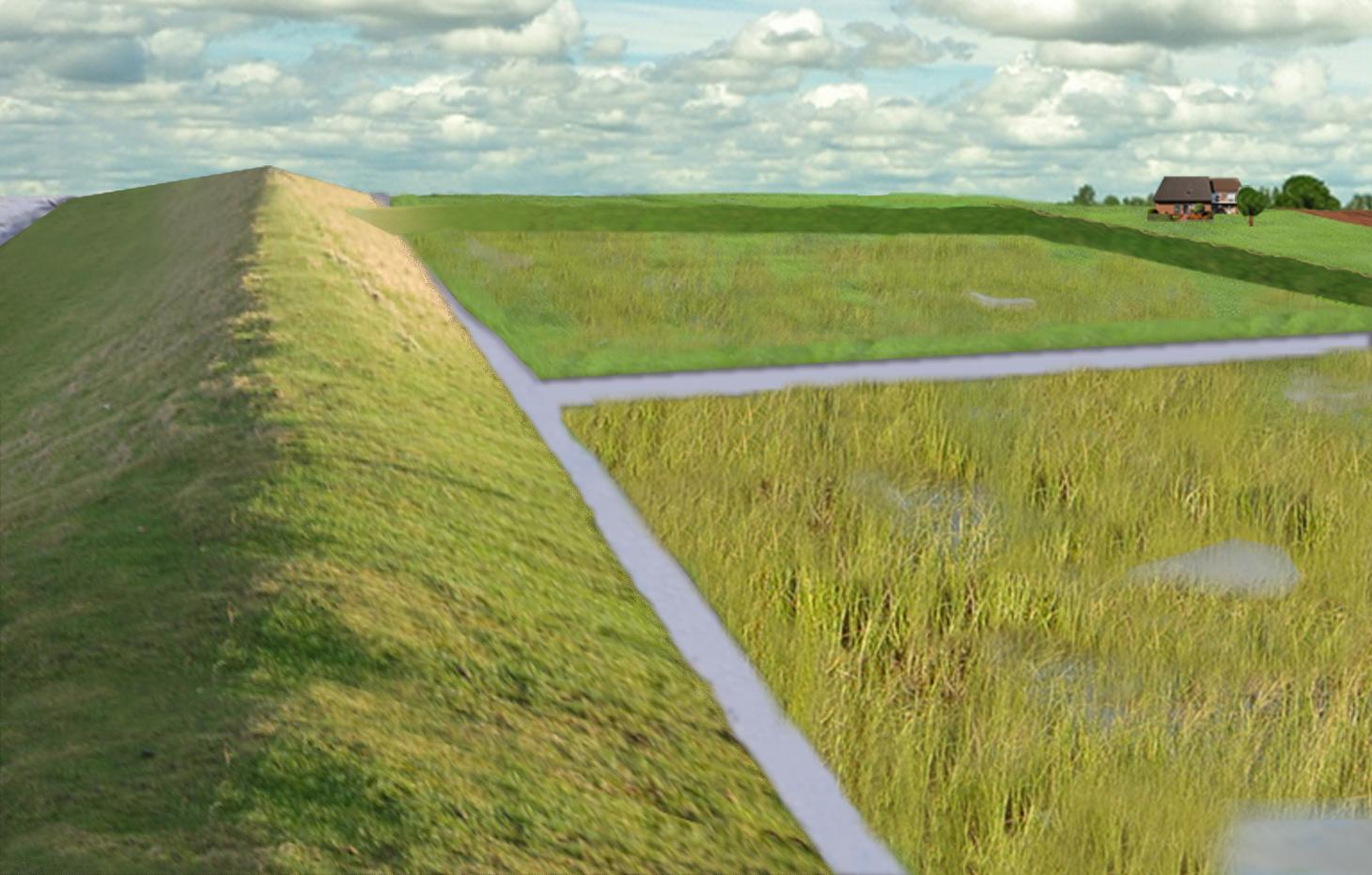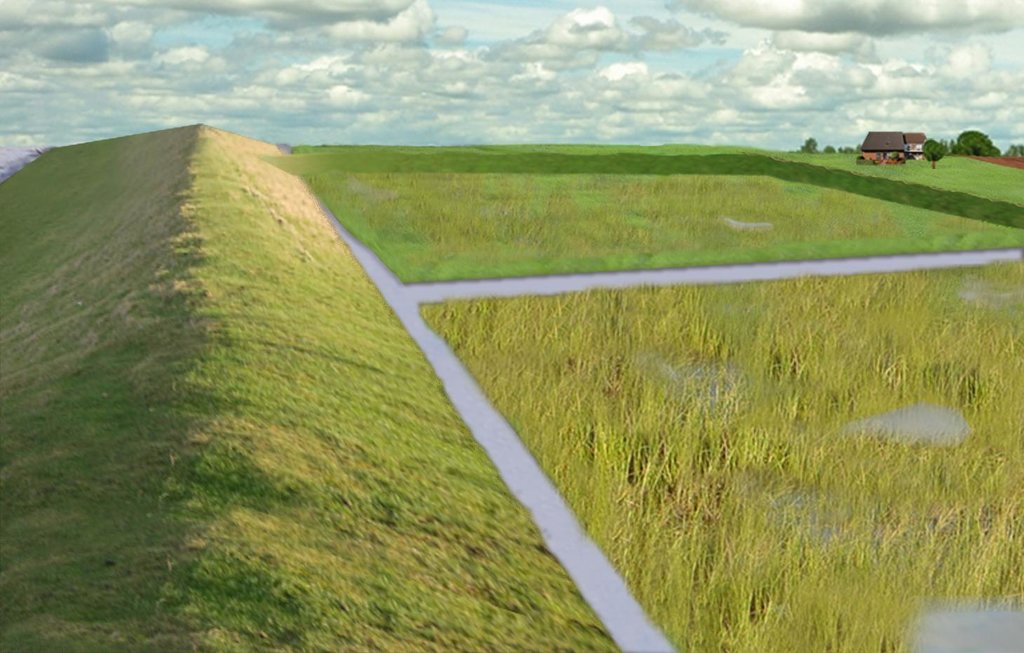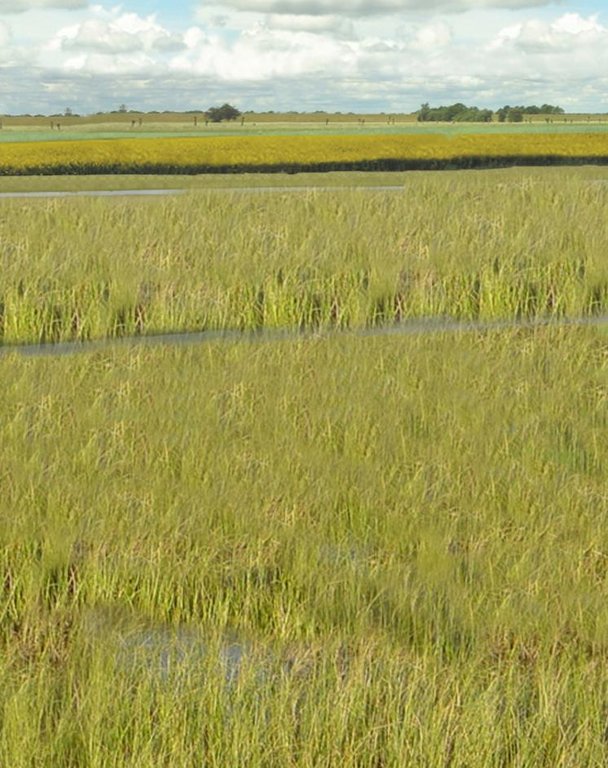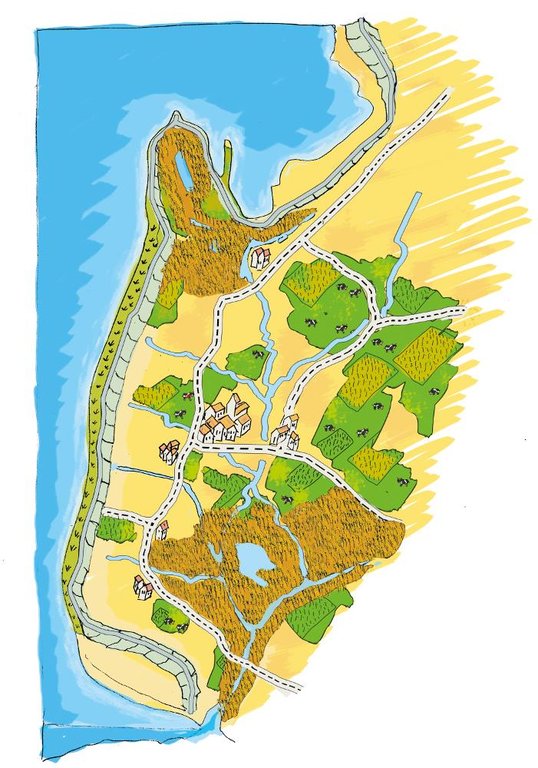Water retention polders without agriculture to improve water management [Германия]
- Создание:
- Обновить:
- Составитель: Martin Maier
- Редактор: –
- Рецензенты: Fabian Ottiger, David Streiff
Ungenutzter Polder zur Verbesserung des Wassermanagements (Nordsee Region)
technologies_1582 - Германия
- Полная аннотация в формате PDF
- Полная аннотация в формате PDF для вывода на печать
- Полная аннотация в формате интернет-страницы
- Полная аннотация (неотформатированно)
- Water retention polders without agriculture to improve water management: 8 марта 2017 г. (inactive)
- Water retention polders without agriculture to improve water management: 8 марта 2017 г. (inactive)
- Water retention polders without agriculture to improve water management: 29 апреля 2017 г. (inactive)
- Water retention polders without agriculture to improve water management: 1 апреля 2019 г. (public)
Просмотреть разделы
Развернуть все Свернуть все1. Общая информация
1.2 Контактные данные специалистов и организаций, участвующих в описании и оценке Технологии
Ответственный (-ые) специалист (-ы)
Специалист по УЗП:
Kleyer Michael
+49 441 7980
michael.kleyer@uni-oldenburg.de
University of Oldenburg
Ammerländer Heerstraße 114, 26129 Oldenburg, Germany
Германия
Специалист по УЗП:
Karrasch Leena
University of Oldenburg
Ammerländer Heerstraße 114, 26129 Oldenburg, Germany
Германия
Специалист по УЗП:
Mayer Martin
+49 441 798 3075
martin.maier@uni-oldenburg.de
University of Oldenburg
Ammerländer Heerstraße 114, 26129 Oldenburg, Germany
Название проекта, содействовавшего документированию/оценке Технологии (если применимо)
Book project: Making sense of research for sustainable land management (GLUES)Название проекта, содействовавшего документированию/оценке Технологии (если применимо)
Sustainable Coastal Land Management (COMTESS / GLUES)Название организации (-ий), содействовавших документированию/оценке Технологии (если применимо)
University of Oldenburg (University of Oldenburg) - Германия1.3 Условия, регламентирующие использование данных, собранных ВОКАТ
Когда были собраны данные (на местах)?
09/06/2015
Составитель и ответственный(-ые) специалист(-ы) согласны с условиями, регламентирующими использование собранных ВОКАТ данных:
Да
1.5 Ссылка на Анкету (-ы) по Подходам УЗП
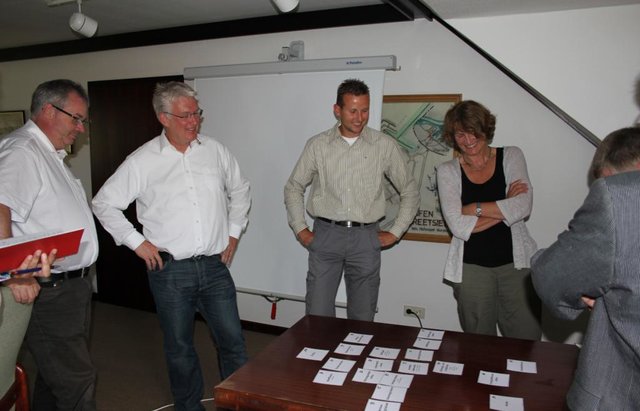
Stakeholder participation in integrated assessment and planning of … [Германия]
Stakeholders have been involved in integrated assessment to develop action-oriented land use options addressing possible climate change adaptation measures as alternatives to traditional coastal protection strategies.
- Составитель: Martin Maier
2. Описание Технологии УЗП
2.1 Краткое описание Технологии
Определение Технологии:
Water retention polders to reduce flood risk due to heavy rainfall or runoff at high tide in coastal lowlands. The retention polders are used to accumulate organic material for climate change mitigation and enable development of undisturbed natural habitats, rather than for agriculture.
2.2 Подробное описание Технологии
Описание:
In the 19th and 20th century land was reclaimed from the sea to make use of the exposed fertile soils for agriculture through a process known as ‘impoldering’. The reclaimed land is now characterized by intensive grazing and cropland. This is a region where agriculture is the most important form of land use. However, the land needs to be regularly drained. Given the expected increase in precipitation in winter due to climate change, the corresponding increase in freshwater discharge needs to be managed. Furthermore, the periods when natural discharge into the sea oc-curs are likely to decrease – because of rising sea levels also caused by climate change. Consequently, in winter and spring, greater quantities of freshwater will need to be pumped into the sea rather than discharged naturally at the low or ‘ebb’ tide. Specially embanked water retention polders will be required to temporarily impound water as part of a multifunctional approach to coastal zone management.
Purpose of the Technology: These retention polders could be a cost-effective alternative to expensive invest-ments in extra pumping capacities to prevent submergence of low-lying cultivated areas. The primary aim is to restrict floods to the retention polders when the drain-age network is overburdened and cannot deal with the predicted extra demands in the future. The high evapotranspiration from the open waterbody, and the reeds growing within, will also help with reducing the amount of water. During dry sum-mers, the water in the retention polder could also be put to creative use as a source of irrigation. Another potential advantage is that subsurface saltwater intrusion in the region could be prevented by the freshwater-filled polders. During extreme storm surges and in the rare case of breaches in the sea wall, the retention polders would serve as an extra line of defence by holding seawater.
Establishment / maintenance activities and inputs: An embankment enclosing approx. 3,000 ha will be able to store up to 25,000,000 m³ water. This will improve the drainage of an area of approx. 49,000 ha. The invest-ment for building this water retention area is high – but for the reasons stated it serves a necessary purpose at a cost which is lower than the alternative – increased pumped drainage installations. Maintenance costs will be lower than the drainage alternative as only the integrity of the embankment needs to be monitored regularly. However within the proposed retention polders – the areas enclosed by the em-bankment - no agricultural activity will take place. This will lead to a change from the current intensive grazing for dairy farming and cropland to non-agricultural use. And therefore a development towards swamps, reed stands and open waters will take place. It is expected that a development to undisturbed natural habitats will increase the number of endangered species. There will be an accumulation of or-ganic material (and organic carbon) in the form of peat due to the wet conditions within the retention polders. Carbon will be sequestered by plant growth and thus reduce the amount of CO2 in the atmosphere. The natural regeneration within the embanked areas will be attractive for tourism and recreation, which should provide an opportunity for additional income generation for the local population.
2.3 Фотографии, иллюстрирующие Технологию
2.5 Страна/ регион/ места, где применяется Технология, информация о которых собрана в данной Анкете
Страна:
Германия
Административная единица (Район/Область):
Germany, Lower Saxony
Более точная привязка места:
Landkreis Aurich
Map
×2.6 Сколько лет применяется данная Технология
Если год начала применения Технологии достоверно неизвестен, дайте примерную оценку:
- 10-50 лет назад
2.7 Внедрение Технологии
Укажите, как именно Технология УЗП была внедрена:
- в качестве научного/ полевого эксперимента
- через проекты/ внешнее вмешательство
3. Классификация Технологии УЗП
3.2 Текущий(-ие) тип(-ы) землепользования на территории, где применяется Технология

Пастбищные угодья
Интенсивный выпас/ выращивание кормов:
- Стойловое содержание/ нулевой выпас
- Улучшенные пастбища
Основные породы скота и виды продукции:
Main species improved pasture: Cattle for milk and meat
Main species cut and carry/ zero grazing: cows for milk

Смешанное землепользование (пашня/ пастбища/ лес), включая агролесоводство
- Агро-пастбищное хозяйство
Основные виды продукции/ услуг:
Major cash crop annual cropping: Corn
Major food crop annual cropping: Wheat and barley
Пояснения:
Major land use problems (compiler’s opinion): Flood events and droughts may substantially disrupt the current land use system in the future and lead to higher drainage costs and higher economic risks for agricultural production. This will reduce the ecological and economic viability of the current intensive and highly productive land use under a changing climate.
Major land use problems (land users’ perception): There is no awareness of risks due to climate change.
Future (final) land use (after implementation of SLM Technology): Other: Oo: Other: wastelands, deserts, glaciers, swamps, recreation areas, etc
Constraints of infrastructure network (roads, railways, pipe lines, power lines): needs to be adapted to regular flooding
Constraints of recreation (landscape is used for reacreation and tourism): change in landscape due to retention area
Constraints of nature conservation areas (protected sites): wetter conditions in retention area
Если использование земель изменилось с началом применения Технологии, укажите тип землепользования до применения Технологии:
Mixed: Mp: Agro-pastoralism
3.3 Дополнительная информация о землепользовании
Пояснения:
Water supply: rainfed, mixed rainfed - irrigated
Число урожаев за год:
- 1
Поясните:
Longest growing period in days: 240 Longest growing period from month to month: March to October
Поголовье скота на единицу площади (если применимо):
> 100 LU /km2
3.4 Категория УЗП, к которой относится Технология
- управление поверхностными водами (родники, реки, озёра, моря)
- Охрана/ управление водно-болотными угодьями
- Flood prevention
3.5 Распределение Технологии по площади
Пояснения:
Total area covered by the SLM Technology is 33.7 m2.
3.6 Мероприятия УЗП, выполняемые в рамках Технологии

инженерные мероприятия
- И5: Дамбы, водохранилища, пруды

управленческие мероприятия
- У1: Смена типа землепользования
- У2: Изменение формы/ интенсивности хозяйствования
Пояснения:
Main measures: structural measures
Secondary measures: management measures
3.7 Основные проблемы деградации земель, на решение которых направлена Технология

ухудшение химических свойств почв
- Хс: засоление/ подщелачивание

деградация водных ресурсов
- Вуп: изменение объема поверхностного стока
- Вуг: изменения уровня грунтовых вод/ водоносных горизонтов
- Взг: снижение качества грунтовых вод
Пояснения:
Main type of degradation addressed: Hs: change in quantity of surface water
Secondary types of degradation addressed: Cs: salinisation / alkalinisation, Hg: change in groundwater / aquifer level, Hq: decline of groundwater quality
Main causes of degradation: change of seasonal rainfall (Climate change, higher rainfall in winter, lower in summer), Heavy / extreme rainfall (intensity/amounts) (Heavy rainfall in winter due to climate change expected), floods (Flooding due to heavy rainfall in winter)
Secondary causes of degradation: droughts (Droughts due to less rainfall in summer (climate change)), other natural causes (avalanches, volcanic eruptions, mud flows, highly susceptible natural resources, extreme topography, etc.) specify (Sea level rise)
3.8 Предотвращение и снижение деградации земель, или восстановление нарушенных земель
Укажите цель Технологии по отношению к деградации земель :
- предотвращение деградации земель
- снижение деградации земель
Пояснения:
Main goals: prevention of land degradation
Secondary goals: mitigation / reduction of land degradation
4. Технические характеристики, мероприятия по практической реализации, вложения и стоимость
4.1 Технический рисунок, иллюстрирующий Технологию
4.2 Спецификация / пояснения к техническому рисунку
The figure shows the study region, located on the North Sea coast. The whole area is protected by a sea wall (grey). Crop fields (yellow), grasslands (green) and the drainage system (light blue) char-acterize the region. Large water bodies (blue) sur-rounded by reeds (brown) act as water retention polders. Vegetative regeneration, build-up of peat and re-establishment of natural habitats occurs within the retention polders. The land around the retention polders (the higher parts of the land-scape) profits from the retention areas as the risk of flooding is reduced and can be used for cropland and intensive grazing. Depending on the size of the retention area a huge amount of excess water can be contained. Retention areas of 3,000 ha are able to store up to 25,000,000 m³ water. The height of the dams depends on the elevation of the landscape but in general a height of less than 2 m is sufficient.
Location: Krummhörn. County of Aurich, Lower Saxony
Technical knowledge required for field staff / advisors: high (To generate income in the retention area (without existing agricultural methods))
Technical knowledge required for Water board: high (To build a new adapted drainage system with retention areas)
Main technical functions: control of dispersed runoff: retain / trap, control of concentrated runoff: retain / trap
Secondary technical functions: increase in organic matter, increase / maintain water stored in soil, increase of groundwater level / recharge of groundwater
Dam/ pan/ pond
Height of bunds/banks/others (m): 1
Width of bunds/banks/others (m): 2
Length of bunds/banks/others (m): 30000
Construction material (earth): sand core and clay cover
Specification of dams/ pans/ ponds: Capacity 25000000m3
Catchment area: 49000ham2
Beneficial area: 49000ham2
Other specifications: size of retention area (embanked area): 3,000.00 ha
Change of land use type: The former pastures and crop fields will not be used any more. Cessation of land use will take place.
Change of land use practices / intensity level: No more agricultural land use within the retention areas. The wetter conditions will lead to peat accumulation
4.3 Общая информация по необходимым вложениям и стоимости
другая/ национальная валюта (название):
Euro
Укажите обменный курс между долларом США и местной валютой (если уместно): 1 доллар США =:
0,94
Укажите среднюю дневную заработную плату наемных работников:
100.00
4.4 Мероприятия, необходимые для начала реализации
| Деятельность | Тип мероприятия | Сроки | |
|---|---|---|---|
| 1. | Building of dams | Инженерные | during winter months |
4.5 Вложения и затраты, необходимые для начала реализации
| Опишите затраты | Единица | Количество | Затраты на единицу | Общая стоимость на единицу | % затрат, оплаченных землепользователями | |
|---|---|---|---|---|---|---|
| Оплата труда | Labour | Dam | 1,0 | 21000000,0 | 21000000,0 | |
| Оборудование | Machine use | Dam | 1,0 | 9000000,0 | 9000000,0 | |
| Строительные материалы | Earth | Dam | 1,0 | 750000,0 | 750000,0 | |
| Общая стоимость запуска Технологии | 30750000,0 | |||||
Пояснения:
Duration of establishment phase: 3 month(s)
4.6 Поддержание/ текущее обслуживание
| Деятельность | Тип мероприятия | Сроки/ повторяемость проведения | |
|---|---|---|---|
| 1. | Control of dams | Инженерные | once a year |
| 2. | Maintenance of dams | Инженерные | once a year |
| 3. | Maintanance of drainage system | Инженерные | once a year |
4.7 Стоимость поддержания/ текущего обслуживания ( в год)
| Опишите затраты | Единица | Количество | Затраты на единицу | Общая стоимость на единицу | % затрат, оплаченных землепользователями | |
|---|---|---|---|---|---|---|
| Оплата труда | Labour | Dam | 1,0 | 800,0 | 800,0 | |
| Оборудование | Machine use | Dam | 1,0 | 300,0 | 300,0 | |
| Строительные материалы | Earth | Dam | 1,0 | 100,0 | 100,0 | 1,0 |
| Другие | Maintenance per km ditch | Dam | 1,0 | 2270,7 | 2270,7 | |
| Общая стоимость поддержания Технологии | 3470,7 | |||||
Пояснения:
Machinery/ tools: digger, open truck
The main investment is based on a dam length of 30 km to build up the retention area of a size of 3 000 ha. The length of the drainage network for the whole watershed is 1,074 km. Within the retention area no maintenance of the drainage network is necessary as there is no agricultural land use and drainage is not maintained any more. Maintenance costs of drainage network are based on long term annual mean cost of 2,270.72 Euro per km including pumping costs.
4.8 Наиболее значимые факторы, влияющие на стоимость затрат
Опишите наиболее значимые факторы, влияющие на стоимость затрат:
The establishment costs are for the whole retention area (3 000 ha). The establishment period will be half a year.
Mainly the elevation in the region determines the costs as the height of the dams depend on the elevation. Typical heights are 1 m up to 2 m with a slope of 1:3.
5. Природные и социально-экономические условия
5.1 Климат
Среднегодовое количество осадков
- < 250 мм
- 251-500 мм
- 501-750 мм
- 751-1000 мм
- 1001-1500 мм
- 1501-2000 мм
- 2001-3000 мм
- 3001-4000 мм
- > 4000 мм
Агроклиматическая зона
- влажная
Thermal climate class: temperate
5.2 Рельеф
Склоны (преобладающие):
- пологие (0-2%)
- покатые (3-5%)
- покато-крутые (6-10%)
- крутые (11-15%)
- очень крутые (16-30%)
- чрезвычайно крутые (31-60%)
- обрывистые (>60%)
Формы рельефа:
- плато/ равнины
- гребни хребтов/холмов
- склоны гор
- склоны холмов
- подножья
- днища долин
Зона высотной поясности:
- 0-100 м над уровнем моря
- 101-500 м н.у.м.
- 501-1000 м н.у.м.
- 1001-1500 м н.у.м.
- 1501-2000 м н.у.м.
- 2001-2500 м н.у.м.
- 2501-3000 м н.у.м.
- 3001-4000 м н.у.м.
- > 4 тыс. м н.у.м.
5.3 Почвы
Средняя мощность почв:
- поверхностные (0-20 см)
- неглубокие (21-50 см)
- умеренно глубокие (51-80 см)
- глубокие (81-120 см)
- очень глубокие (> 120 см)
Гранулометрический состав (верхнего горизонта):
- тонкодисперсный/ тяжёлый (глинистый)
Содержание органического вещества в верхнем горизонте:
- высокое (> 3%)
Если возможно, приложите полное описание почв или укажите доступную информацию, например тип почв, рH/ кислотность почв, ёмкость катионного обмена, содержание азота, содержание солей и т.д.
Soil fertiliuty is high
Soil drainage/infiltration is medium
Soil water storage capacity is high
5.4 Доступность и качество воды
Уровень грунтовых вод:
< 5 м
Доступность поверхностных вод:
хорошая
Качество воды (без обработки):
исключительно для сельскохозяйственного использования (орошение)
5.5 Биоразнообразие
Видовое разнообразие:
- низкое
5.6 Характеристика землепользователей, применяющих Технологию
Рыночная ориентация производства:
- товарное/ рыночное хозяйство
Доходы из других источников:
- 10-50% всех доходов
Относительный уровень достатка:
- средний
Индивидуальное или коллективное хозяйство:
- использующее наемных работников (компания, государство)
Уровень механизации:
- механизировано/ есть автотранспорт
Пол:
- женщины
- мужчины
Укажите другие важные характеристики землепользователей:
Land users applying the Technology are mainly common / average land users
Population density: 50-100 persons/km2
Annual population growth: < 0.5%
1% of the land users are very rich and own 1% of the land.
50% of the land users are rich and own 24% of the land.
50% of the land users are average wealthy and own 50% of the land.
and own 25% of the land.
Off-farm income specification: Many farmers do additional work in industry or servicing sector
5.7 Средний размер земельных участков, арендуемых или находящихся в собственности землепользователей, применяющих Технологию
- < 0,5 га
- 0,5-1 га
- 1-2 га
- 2-5 га
- 5-15 га
- 15-50 га
- 50-100 га
- 100-500 га
- 500-1000 га
- 1000-10000 га
- > 10000 га
Считается ли это мелким, средним или крупным хозяйством (по местным масштабам)?
- крупное
Пояснения:
Average area of land owned or leased by land users applying the Technology: 5-15 ha, 15-50 ha, 50-100 ha, 50-100 ha, 100-500 ha
5.8 Собственность на землю, права на земле- и водопользование
Землевладелец:
- индивидуальная, не оформленная в собственность
Право землепользования:
- индивидуальное
5.9 Доступ к базовым услугам и инфраструктуре
медицинское обслуживание:
- плохой
- средний
- хорошая
образование:
- плохой
- средний
- хорошая
технические консультации:
- плохой
- средний
- хорошая
занятость (вне хозяйства):
- плохой
- средний
- хорошая
рынки:
- плохой
- средний
- хорошая
электроснабжение:
- плохой
- средний
- хорошая
транспорт и дорожная сеть:
- плохой
- средний
- хорошая
водоснабжение и канализация:
- плохой
- средний
- хорошая
финансовые услуги:
- плохой
- средний
- хорошая
6. Воздействия и заключительные положения
6.1 Влияние Технологии УЗП в пределах территории ее применения
Социально-экономическое воздействие
Продуктивность
производство сельскозяйственных культур
Комментарий/ пояснения:
No agricultural land use in the retention area any more.
производство кормов
Комментарий/ пояснения:
No agricultural land use in the retention area any more.
Доходы и затраты
доходы хозяйства
Другое социально-экономическое воздействие
Intrusion by saline groundwater
Социальное и культурное воздействие
возможности отдыха и рекреации
Комментарий/ пояснения:
Diversification of landscape by building the retention area will increase the attractivity for recreation and tourists.
знания в области УЗП/ деградации земель
Комментарий/ пояснения:
No agricultural land use under wet conditions results in more diversity and conservation of regional species and habitats.
Improved livelihoods and human well-being
Комментарий/ пояснения:
'Regional belonging' and 'feeling of safety' are measured. The amount of increase is modelled and will be added here.
Экологическое воздействие
Водный цикл/ поверхностный сток
количество воды
Комментарий/ пояснения:
Typical for the region are wet situations. These typical wet conditions are restored by cessation of drainage system within the retention area.
качество воды
Комментарий/ пояснения:
Updwelling of saline groundwater is prevented by increased water level in the retention area.
уровень грунтовых/ подземных вод
Комментарий/ пояснения:
By water in the retention are the recharge of groundwater will increase and prevents salinization.
испарение
Комментарий/ пояснения:
Instead of pumping water into the sea a higher amount is evapotranspirated naturally.
Почвы
влажность почв
Комментарий/ пояснения:
Typical for the region are wet situations. These typical wet conditions are restored by cessation of drainage system within the retention area.
засоленность
Комментарий/ пояснения:
By water in the retention are the recharge of groundwater will increase and prevent salinization.
почвенное / подземное органическое вещество/ углерод
Комментарий/ пояснения:
By wetter conditions and due to cessation of land use, the soil organic matter will be increased and peat layers will established..
Биоразнообразие: растительность, животный мир
биомасса/ содержание углерода в надземной биомассе
разнообразие флоры
Комментарий/ пояснения:
By wet conditions without land use the number of typical local species will be increased.
разнообразие фауны
Комментарий/ пояснения:
By wet conditions without land use the number of typical local species will be increased.
полезные виды
разнообразие местообитаний
Комментарий/ пояснения:
By wet conditions without land use the number of typical local habitats will be increased.
Климат и снижение риска стихийных бедствий
выбросы углекислого газа и парниковых газов
Комментарий/ пояснения:
Modelled is the global warming potential by gas emissions. Not yet clear if it is benefit or disadvantage. Model will show.
6.2 Влияние Технологии за пределами территории ее применения
доступность воды
надежность и постоянство водотоков
Комментарий/ пояснения:
Water stored in retention area can be used for irrigation during dry summer months.
подтопление ниже по течению
Комментарий/ пояснения:
Measured m3 of excess water in the catchment area, leading to floods or needs to be pumped. Exact values from modelling will be added as soon as possible!
ущерб прилегающим полям
ущерб объектам инфраструктуры общего/ частного пользования
Production area
Количество до применения УЗП :
49.000
Количество после применения УЗП:
48.400
Комментарий/ пояснения:
For the whole catchment area a loss of approx. 600 ha (size of retention area).
6.3 Подверженность и чувствительность Технологии УЗП к постепенным изменениям климата и экстремальным погодным явлениям/ стихийным бедствиям, связанным с изменением климата (в понимании землепользователей)
Постепенное изменение климата
Постепенное изменение климата
| Сезон | Тип изменения климата/ экстремального явления | Насколько успешно Технология справляется с этим? | |
|---|---|---|---|
| среднегодовые температуры | увеличилось | хорошо |
Экстремальные явления, связанные с изменением климата (стихийные бедствия)
Погодные стихийные бедствия
| Насколько успешно Технология справляется с этим? | |
|---|---|
| местные ливневые дожди | хорошо |
| местные ураганы | хорошо |
Стихийные бедствия климатического характера
| Насколько успешно Технология справляется с этим? | |
|---|---|
| засухи | хорошо |
Гидрологические стихийные бедствия
| Насколько успешно Технология справляется с этим? | |
|---|---|
| регулярные наводнения (выход рек из берегов) | хорошо |
Другие воздействия, связанные с изменением климата
Другие воздействия, связанные с изменением климата
| Насколько успешно Технология справляется с этим? | |
|---|---|
| сокращение вегетационного периода | не известно |
6.4 Анализ эффективности затрат
Насколько получаемый результат сопоставим с первоначальными вложениями (с точки зрения землепользователей)?
Эффективность затрат в краткосрочной перспективе:
крайне отрицательно
Эффективность затрат в долгосрочной перспективе:
влияние незаметно
Насколько получаемый результат сопоставим с текущими расходами по поддержанию технологии (с точки зрения землепользователей)?
Эффективность затрат в краткосрочной перспективе:
влияние незаметно
Эффективность затрат в долгосрочной перспективе:
позитивное
Пояснения:
The benefits will be visible in the longer time frame. There will be benefits of the investments when considering sea level rise in the upcoming 100 years.
6.5 Внедрение Технологии
Пояснения:
Comments on spontaneous adoption: The SLM Technology is not implemented by local land users but this SLM technology needs to be implemented by spatial planning of the county / federal state.
There is a little trend towards spontaneous adoption of the Technology
Comments on adoption trend: The SLM Technology is not yet implemented by land users but first it needs to be considered in spatial planning of the county and the federal state. Land users and local experts showed during participatory workshops that there may be a chance for implementation.
6.7 Сильные стороны/ преимущества/ возможности Технологии
| Сильные стороны/ преимущества/ возможности по мнению землепользователей |
|---|
|
Protection of vulnerable landscape by building the retention area in the low elevated parts of the landscape that are up to date already difficult to drain. The retention area will support the drainage of the arable fields and pastures outside the retention area. How can they be sustained / enhanced? Combine with other technical solutions for protection against flooding (including strengthening of the ditch system and in-creasing pumping capacity). |
| Сильные стороны/ преимущества/ возможности по мнению составителя или других ключевых специалистов |
|---|
|
Prevention of flooding during strong rainfalls and possibility to irrigate during dry periods How can they be sustained / enhanced? The larger the retention areas are the more water can be stored. |
|
Prevention of salt water intrusion in the region. Fresh water in the retention areas prevent saline ground water from up dwelling How can they be sustained / enhanced? Build polders where saline ground water dwells up. |
|
Endangered species might obtain new habitats in the retention area How can they be sustained / enhanced? Cessation of agricultural land use can help to improve the habitats for endangered species and increase attractiveness for tourism. |
|
Through investments in building retention areas the very expensive strengthening of existing drainage structures is not necessary anymore How can they be sustained / enhanced? Alternative benefits for land owner can be generated e.g. increas-ing the attractiveness for tourism. |
6.8 Слабые стороны/ недостатки/ риски Технологии и пути их преодоления
| Слабые стороны/ недостатки/ риски по мнению землепользователей | Возможные пути их преодоления/снижения? |
|---|---|
| Retention area in a region of high relevance for tourism. The retention area will change the landscape and this may reduce the value of the region for tourism | Include interests from tourism in the retention area (access, information, attractivity). |
| Endangered species might lose habitats when establishing the retention polders | Do not build a retention area where endangered species live. |
| Loss of livelihoods | Retention areas should be planned for parts of the landscape without settlements. |
| Слабые стороны/ недостатки/ риски по мнению составителя или ответственных специалистов | Возможные пути их преодоления/снижения? |
|---|---|
| Loss of land for agricultural production | Build up retention area in low elevated parts, where the productivity is already poor. |
| For peat formation wet conditions are necessary, but under wet conditions highest methane emissions were measured. The emissions due to methane are therefore higher than the potential storage effects due to carbon sequestration. | Ground water levels should kept stable near to the soil surface. |
7. Справочные материалы и ссылки
7.2 Ссылки на опубликованные материалы
Название, автор, год публикации, ISBN:
http://www.comtess.uni-oldenburg.de/
7.3 Ссылки на материалы, доступные онлайн
Название/ описание:
http://www.comtess.uni-oldenburg.de/
Ссылки и модули
Развернуть все Свернуть всеСсылки

Stakeholder participation in integrated assessment and planning of … [Германия]
Stakeholders have been involved in integrated assessment to develop action-oriented land use options addressing possible climate change adaptation measures as alternatives to traditional coastal protection strategies.
- Составитель: Martin Maier
Модули
Нет модулей


